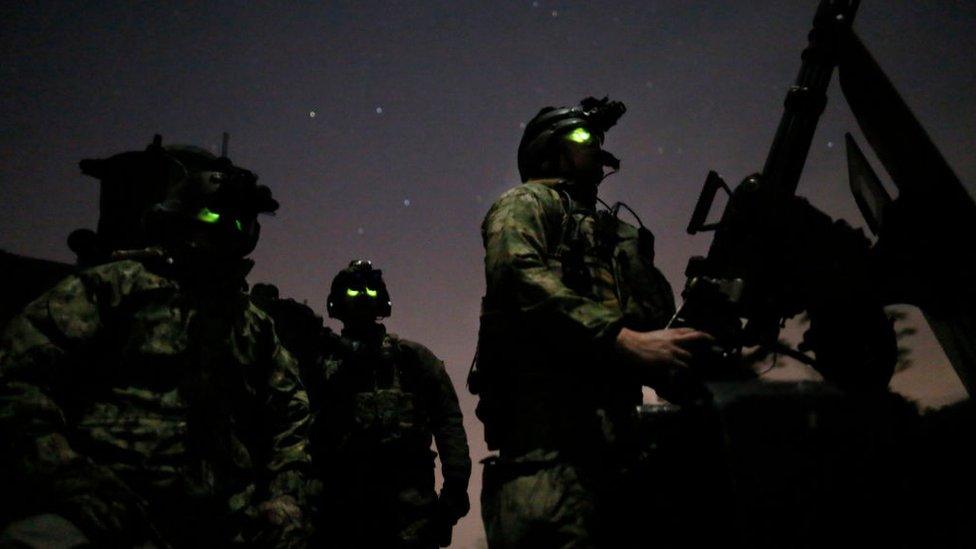US Navy will start testing elite Seals for illicit drug use
- Published

US Navy special operations recruits on a night-time training mission
The US Navy will begin random drug testing of its special operations forces amid widespread concerns over the use of performance-enhancing drugs.
Random tests of 15% of four units - about 200 sailors - will be done each month beginning November.
The move comes after a recent report following the death of a recruit raised concerns about the use of steroids and human growth hormones.
The Navy Seals are among the most elite units in the US military.
Rear Admiral Keith Davids, commander of Naval Special Warfare (NSW), said the testing was part of a "steadfast commitment to the health, safety, and operational readiness of every member of the NSW community".
US Navy special forces include Sea, Air and Land teams (Seals) and special boat teams, with around 9,000 sailors. Special forces are called upon to carry out secretive, sensitive missions. Navy Seals, for instance, carried out the mission in Pakistan that killed Osama bin Laden in 2011.
The death of a Navy Seal trainee during a training course in February 2022 prompted an internal investigation that found .
The trainee, Kyle Mullen, 24, died of pneumonia just hours after completing the Seal "Hell Week" trial.
A report by the Naval Education and Training Command said Mr Mullen's death was not caused by performance enhancing drugs, although vials of drugs and syringes were found in his car.
The report said there were "strong indicators" of performance enhancing drug use among Seal candidates.
Until now, military leaders have generally resisted random drug testing due to the expense and the need for specialised laboratories, and have said that the numbers using performance enhancing drugs are small.
From February 2022 to March 2023, NSW officials tested more than 2,500 candidates for high testosterone levels, a cheaper and more common test that can potentially indicate steroid use. High levels of the hormone were found in 74 sailors, three of whom subsequently tested positive for anabolic steroid use.
Related topics
- Published26 May 2023